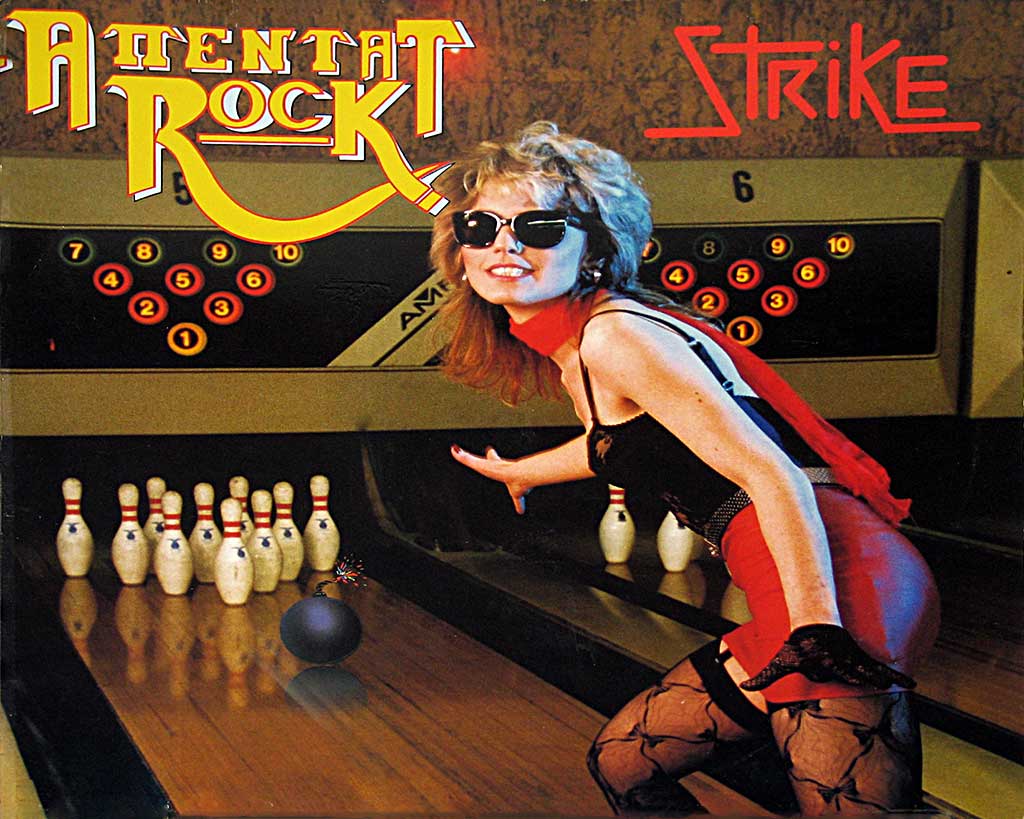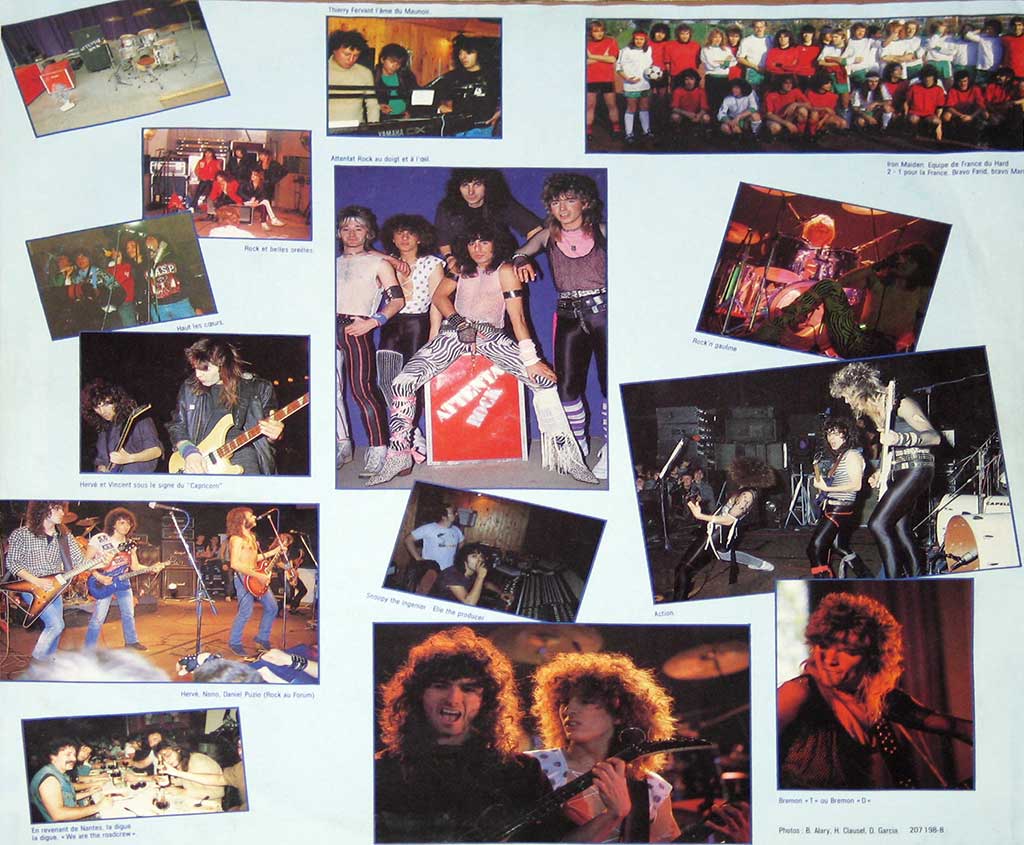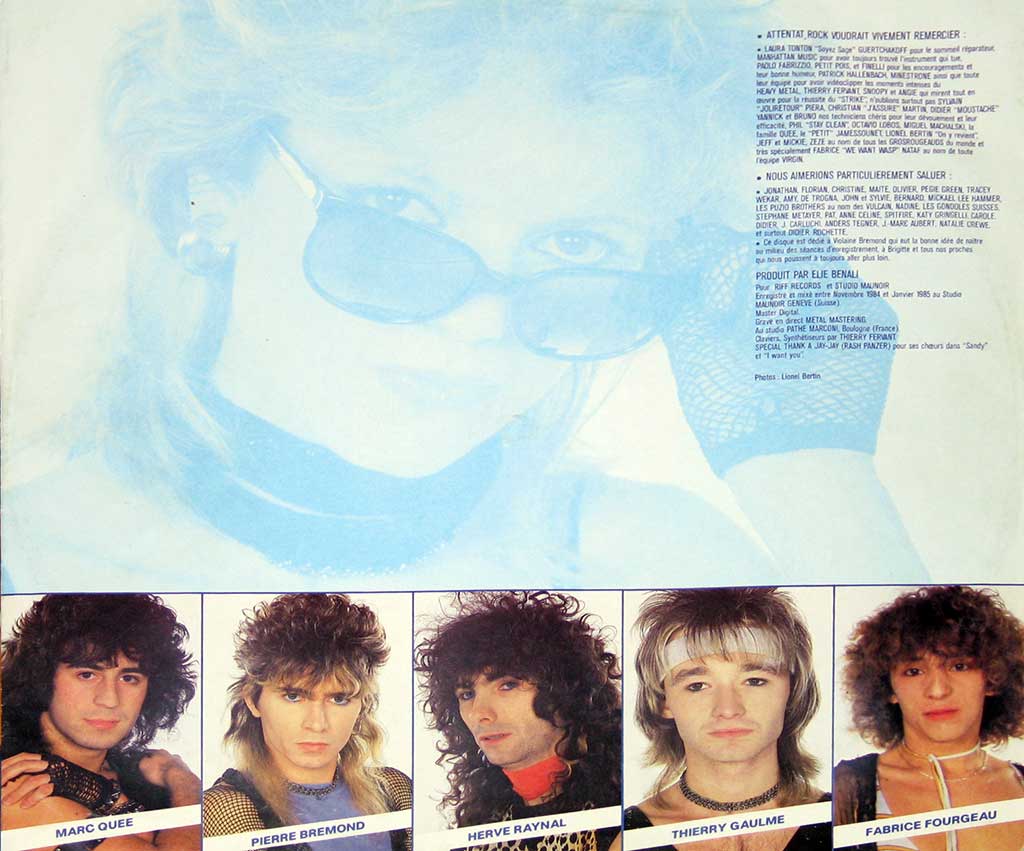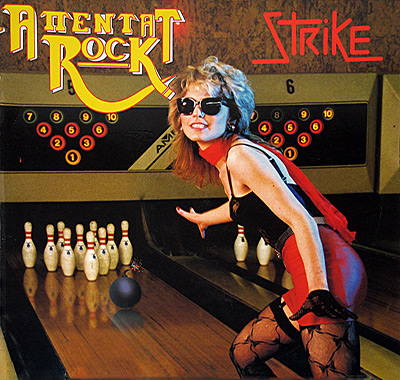"Strike" (1985) Album Description:
“Strike” was Attentat Rock’s moment of ignition — a loud, proud, and gloriously over-the-top declaration that French heavy metal had a pulse and wasn’t afraid to use it. Recorded in Geneva’s Maunoir Studio between 1984 and 1985, the album bottled the sweaty optimism of a young band convinced that Marshall stacks and eyeliner could conquer the world.
French Steel Meets Mid-’80s Europe
The mid-’80s were a fascinating mess for metal. Iron Maiden ruled the airwaves, Judas Priest had turned leather into theology, and Europe’s underground was catching fire in a dozen languages. France, often mocked for its chanson heritage, suddenly birthed its own breed of headbangers — Vulcain, Sortilège, Warning — and into that noisy uprising charged Attentat Rock, half swagger, half sincerity, all conviction. “Strike” didn’t just ride the wave; it tried to steer it.
The Road to “Strike”
Before this album, Attentat Rock had been building a loyal following across the Rhône Valley and Swiss border clubs. They had something most French acts lacked: a frontman who could sing in fluent English and a twin-guitar lineup trained in the gospel of Thin Lizzy and early Scorpions. Producer Elie Benali gave them the one thing they’d been missing — studio discipline without diluting their chaos. The sessions at Maunoir stretched across cold Geneva nights, fueled by cheap beer, fresh ambition, and the firm belief that this record would open international doors.
Sound and Spirit
“Strike” lives up to its name. The opening salvo “Forces of the Dark” surges with galloping riffs and teenage bravado, while “Sandy” and “Open Your Eyes” prove that French metal could flirt as easily as it could fight. The guitars of Fabrice Forgeau and Hervé Raynal weave in clean harmony — one melodic, one sharp as glass — anchored by Pierre Brémond’s steady bass and Thierry Gaulme’s punchy drums. Over it all, Marc Quee’s voice glides somewhere between Bonnet and Halford, full of melodic bite and just enough accent to remind you this isn’t Los Angeles.
Against the Mainstream Current
In 1985, Europe was drowning in glossy MTV metal. Bands like Dokken and Europe were polishing their riffs for export, while Attentat Rock doubled down on grit. Their humor and theatricality — perfectly captured in the bowling-alley cover photo — gave them personality, but it also limited their reach. France wasn’t exactly eager to embrace English-language metal from its own sons. The irony still stings: they were too French to be British, too British to be French.
Band Chemistry and Clash
Inside the band, ambition met exhaustion. Marc Quee wanted bigger shows; Forgeau was obsessed with production quality; Benali pushed for precision. The result is a record that sounds tight but slightly restless — every note carrying the tension of a group straining toward its next level. You can almost hear the friction in “Heroes Never Die,” a song that feels like both statement and farewell.
Critical Reception and Aftermath
“Strike” didn’t exactly storm the charts, but it burned its initials into the underground. Fanzines across Europe praised its musicianship, even as mainstream press ignored it. For collectors today, it’s one of those cult LPs that bridges the gap between local pride and global ambition — a record that smelled faintly of vinyl dust, sweat, and the dream of electric guitars echoing beyond the Alps.
Legacy and Reflection
Four decades later, “Strike” still feels like a time capsule from a parallel universe where French metal ruled arenas. The energy is raw, the production honest, and the hooks unashamedly catchy. Spin it loud and you’ll hear a young band swinging for glory — and for a few minutes, you’ll believe they hit it. The grooves may crackle with age, but that reckless optimism still roars through every spin.






